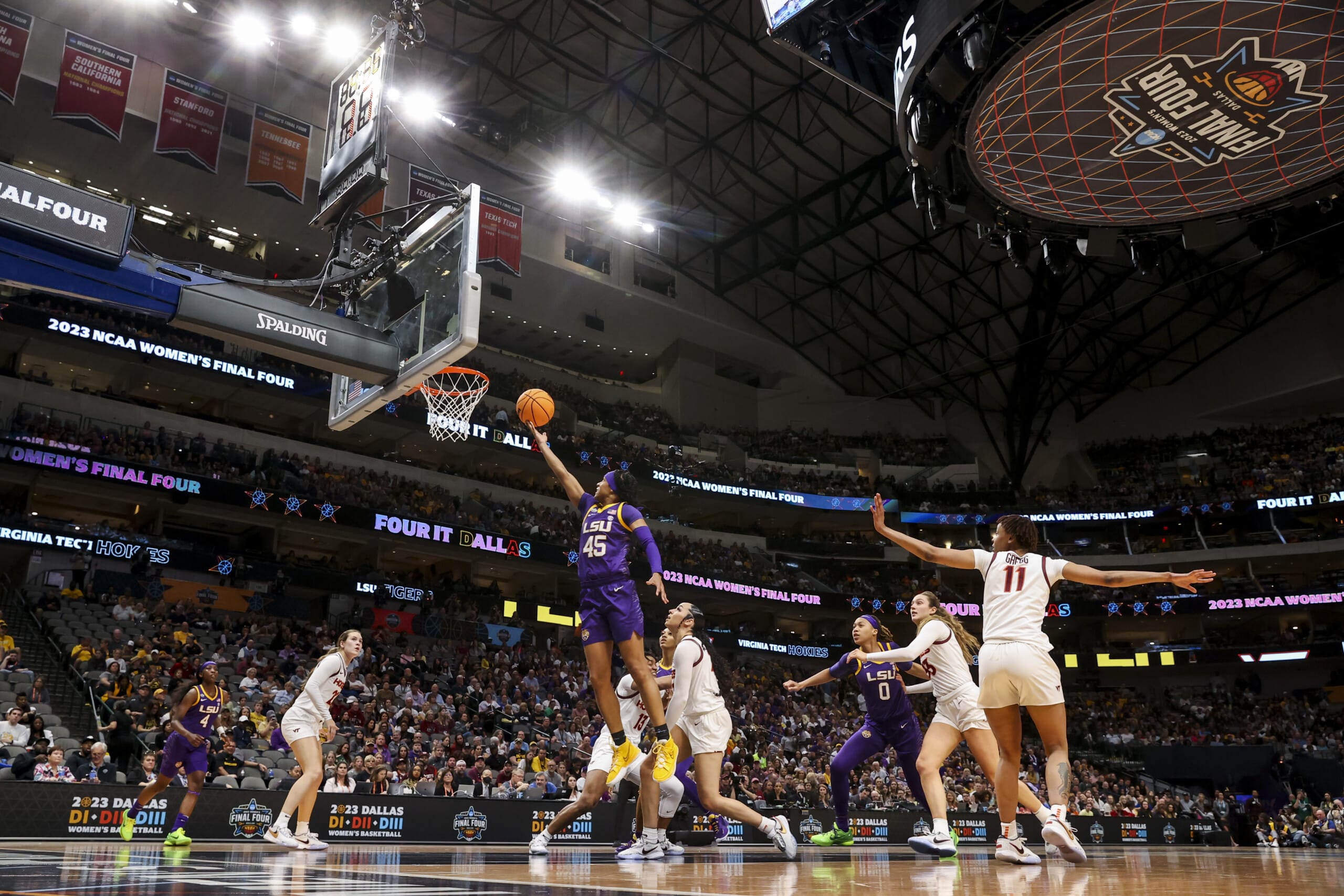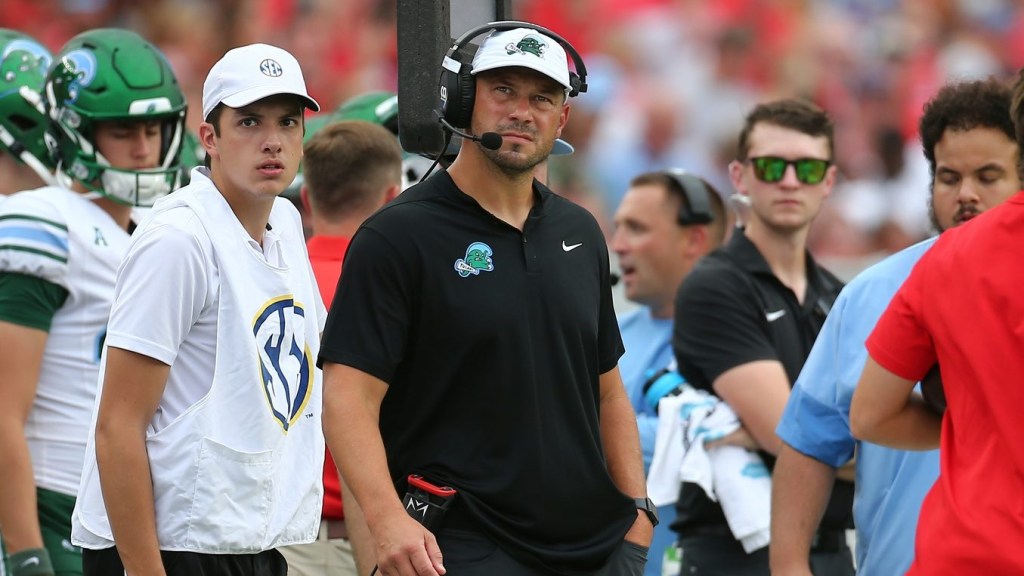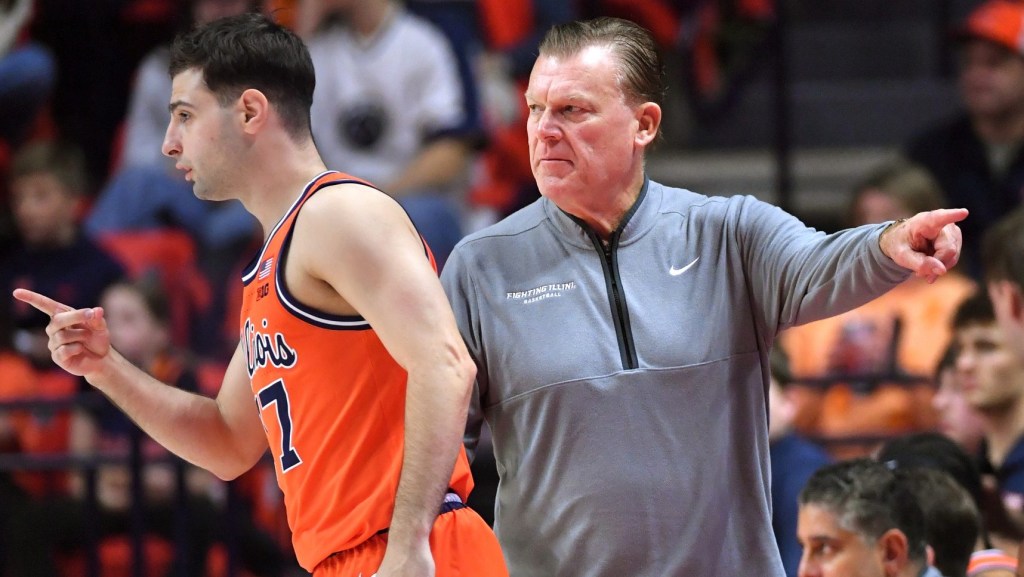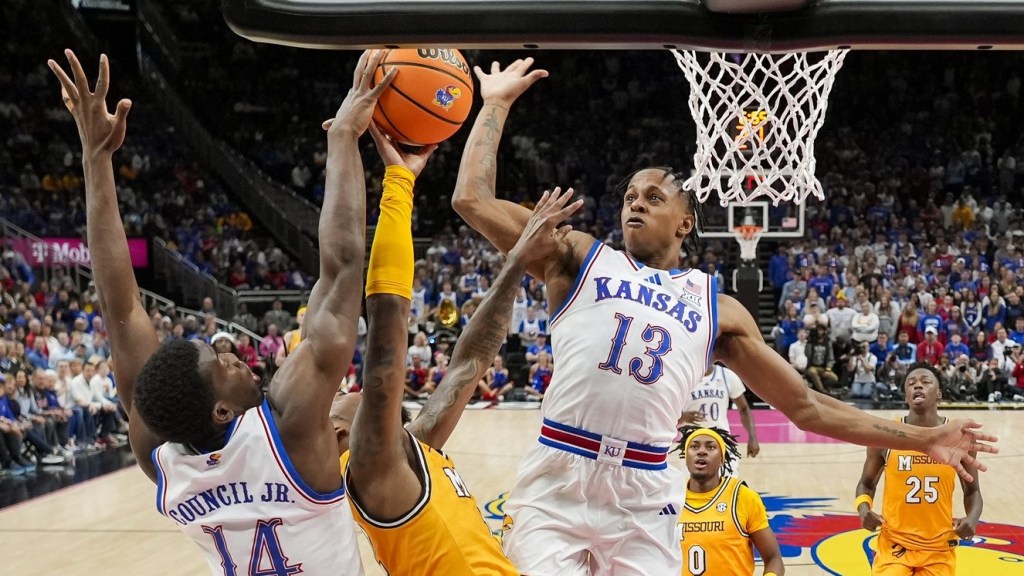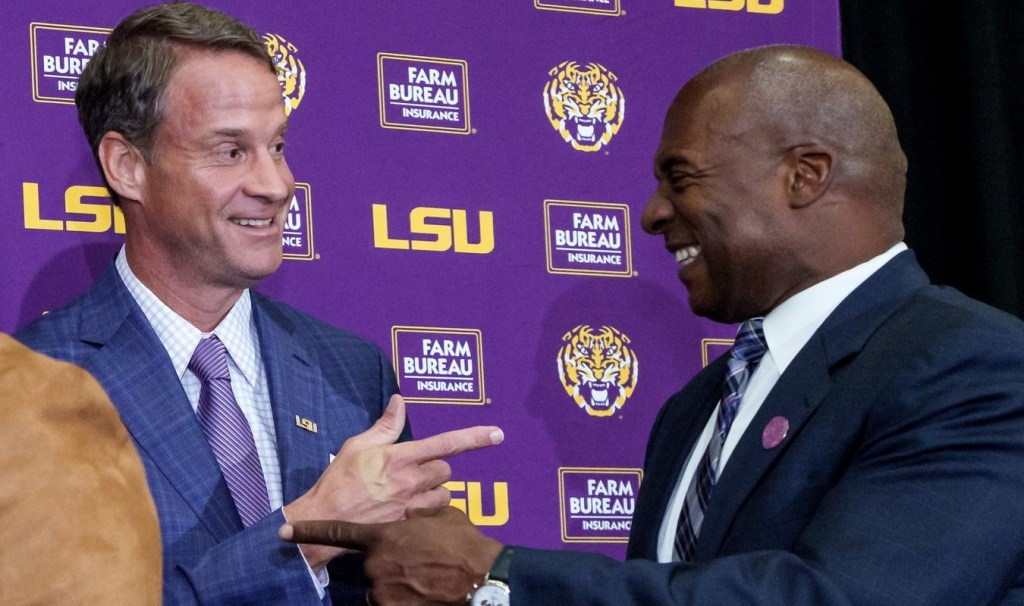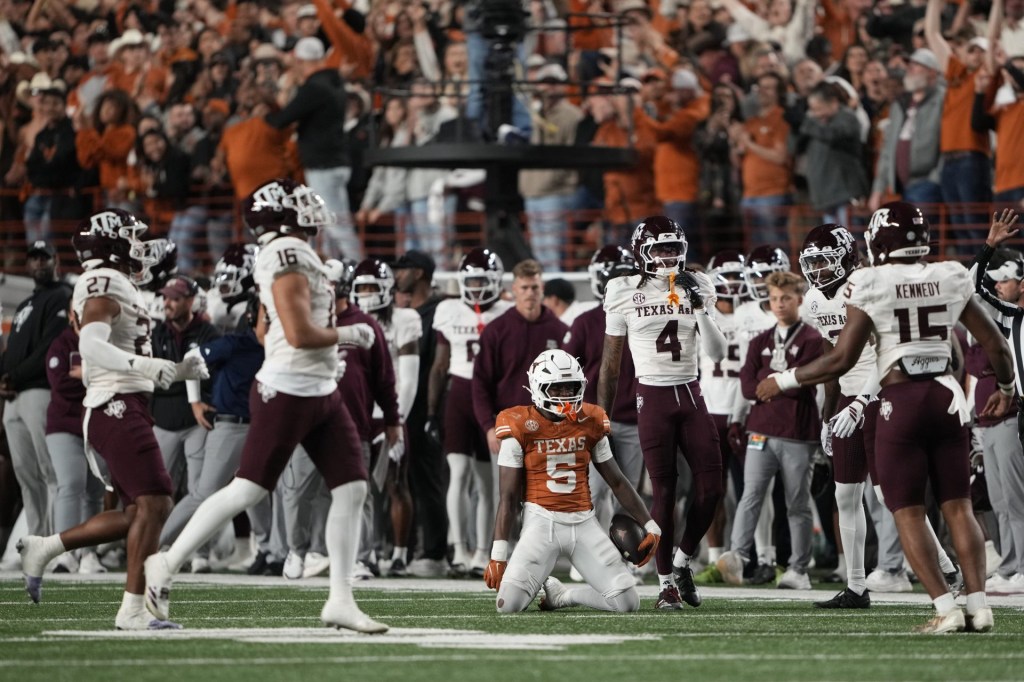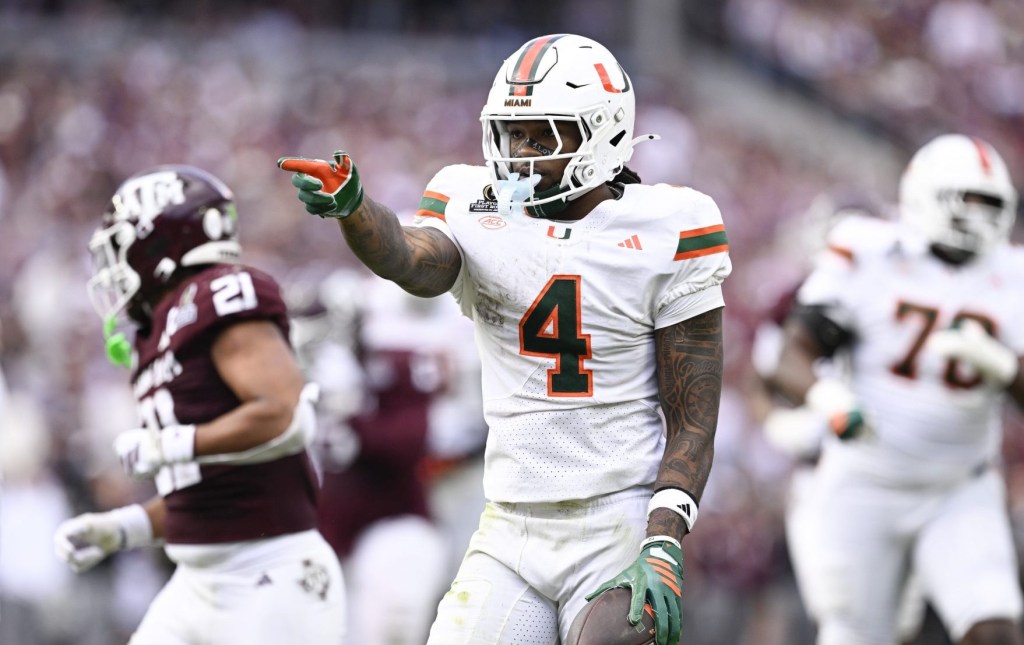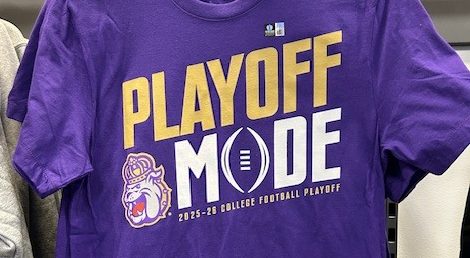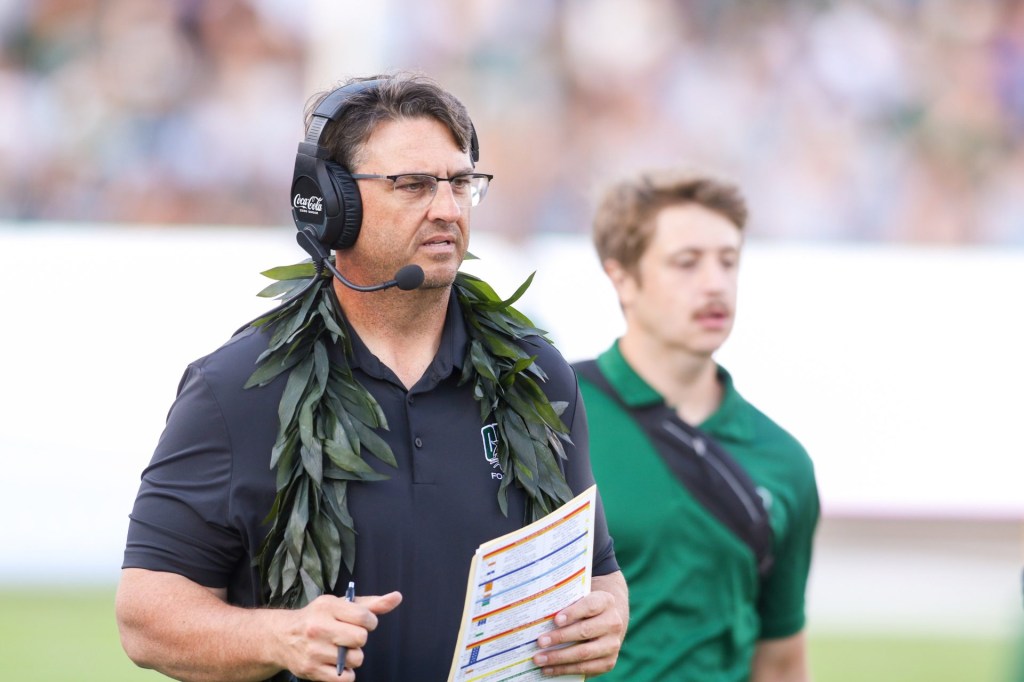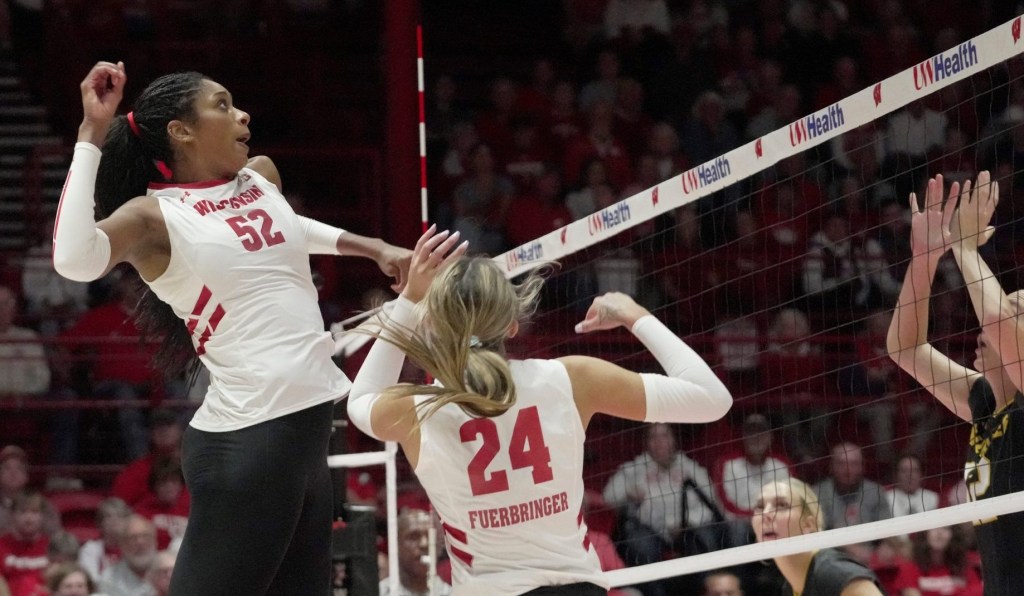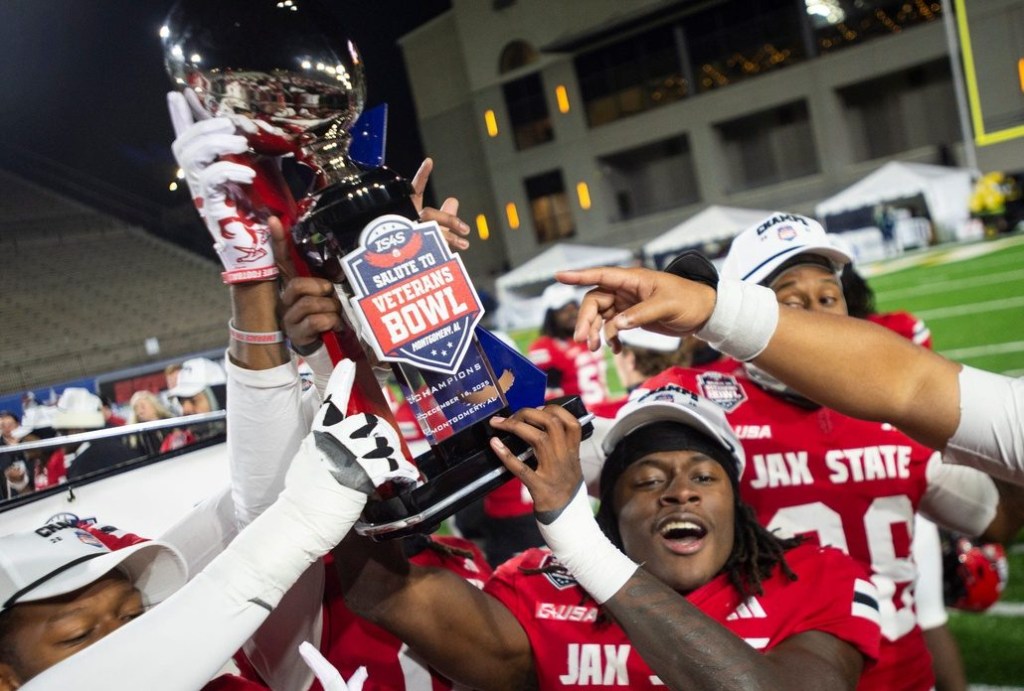DALLAS — The women’s Final Four has grown exponentially by every measurable statistic.
Friday night’s highly anticipated pair of semifinals drew a sellout crowd of 19,288 roaring fans at American Airlines Center in Dallas — and the get-in ticket prices far outpaced the men’s in Houston’s NRG Stadium.
The NCAA had to open three press areas, in addition to the courtside press row, to accommodate all the reporters. On TV, the semis took over the entirety of ESPN — and became the most-watched women’s semifinals in NCAA history. Iowa-South Carolina averaged 5.5 million viewers, while LSU-Virginia Tech averaged 3.4 million.
The energy extended beyond the arena all weekend, from the signage in hotels and advertisements throughout the city to the elaborate activation booths from sponsors at the fan fest.
When Iowa’s Monika Czinano walked into her press conference on Saturday, which featured a line of TV cameras and an Iowa background, she gasped. “This particular tournament feels a lot different than any of the other ones I’ve been in,” Czinano, who wrote a blog in 2022 on gender equity, said. “The opportunities that we’ve had this time around, the things we’ve gotten to do — it feels a lot more equitable than it has in years past.”
To understand the phenomenon, look no further than native Louisiana rapper Lil Wayne — who intends to use a clip of LSU coach Kim Mulkey serenading reporters as a sample in his next song.
Obviously, the women’s tournament still doesn’t compare to the men’s. Industry executives who spoke with Front Office Sports believe that can change — but structural factors, from its timing and location to sponsorship and TV agreements, are holding the women’s Final Four back.
“I think there’s a natural ceiling for the women’s Final Four,” Big East Commissioner Val Ackerman, who previously served as WNBA Commissioner and president of USA Basketball, told FOS. “I applaud the [NCAA] committees and the staff for creating a wonderful event … but I think it could be bigger and better.”
Maximum Capacity
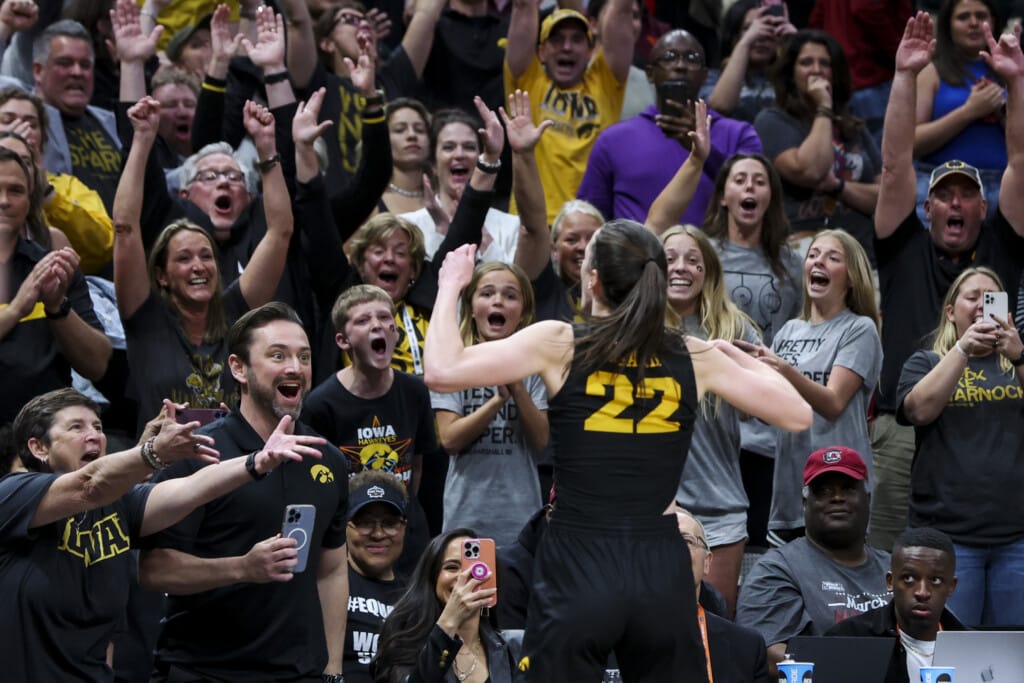
Kevin Jairaj-USA TODAY Sports
The most tangible limitation on the women’s tournament is the arena in which it is played.
Every women’s Final Four takes place in an NBA and/or WNBA arena. This year’s location, the home of the Dallas Mavericks, hosts around 20,000 fans.
But the men’s Final Four has been in a football stadium every year since 1997. NRG Stadium can host about 72,000 fans — 360% more than the American Airlines Center.
An economics degree isn’t necessary to see that based on current metrics, the NCAA could fill a football stadium for a women’s Final Four if it wanted to. The sellout semifinal crowd paid get-in prices of more than $400. The women’s championship game will be the most expensive on record: Prices start at more than $500 each, according to TickPick.
There’s the debate about whether college basketball games, men’s or women’s, should be in a football stadium — the depth is disconcerting and the raised court is unorthodox. But regardless of the merits of the experience, the women’s product is popular enough to hit that capacity.
An Inherent Issue
The women’s and men’s Final Fours are hosted on the same weekend in completely different locations, putting the women’s tournament “up against the men’s in every way, shape, or form,” Ackerman said last year.
Almost every single industry event, like commissioner meetings and networking meals, take place at the men’s Final Four. Last year, Ackerman snuck onto the NCAA charter plane to go back and forth between Minneapolis and New Orleans. Media members and industry executives almost always choose the men’s.
This is one of the only years where the two Final Fours are within driving distance. But even then, the staggered days of games make it extremely strenuous to shuttle back and forth. Most industry executives don’t even bother.
It might be obvious that SEC Commissioner Greg Sankey would be in Dallas and not Houston, given that LSU and South Carolina were playing and no men’s teams made the Final Four. But he will travel back and forth — since he was needed in meetings in Houston. NCAA President Charlie Baker did the same, FOS confirmed.
Sponsors have a similar conundrum because they’re splitting personnel and resources. But the activations at the women’s tournament are stunted by the NCAA’s sponsorship contract with CBS/Warner Bros. Discovery, which forces brands to buy into the men’s tournament before they buy into any other sport — including women’s basketball. Brands without interest in the men’s tournament therefore don’t buy in at all.
Maintaining the Status Quo

Kirby Lee-USA TODAY Sports
Ackerman believes combining the Final Fours is the key to fostering unencumbered growth for the women’s event. She acknowledged the demographic of women’s fans is much less corporate, and more diverse, than the men’s. But she believes “it’s a way to win over a whole new audience of writers and sponsors and fans.”
The NCAA’s gender equity review, commissioned in 2021, agreed with her position — especially given the current sponsorship contract. A similar location would allow brands to support both tournaments at a lower cost.
NCAA committees — on the men’s and women’s sides — ultimately decided against it for at least the next decade after conducting research in the fall of 2021. The committees noted they wanted to see how other equity improvements panned out first. The idea was controversial, too — only half of women’s basketball coaches were interested in the idea.
But Ackerman discovered the NCAA did not call USA Basketball, the WTA, or the USTA (who host men’s and women’s together successfully), or hire a consulting firm like they did for other alternative ideas.
“I was also told that they had only discussed ‘concepts’ in the committee rooms,” Ackerman said. “I requested this in writing: a detailed breakdown of how a combined event would unfold. … And I didn’t get any of that. I thought that was a disservice to the membership.” To her point, Women’s Basketball Coaches Association executive director Danielle Donehew previously told FOS that some coaches may have been in favor of the idea if they had received more details.
But the opponents of the idea, who believe the women’s Final Four games would become a “sideshow” at a combined event, have won the debate for now.
The Path to 18 Million
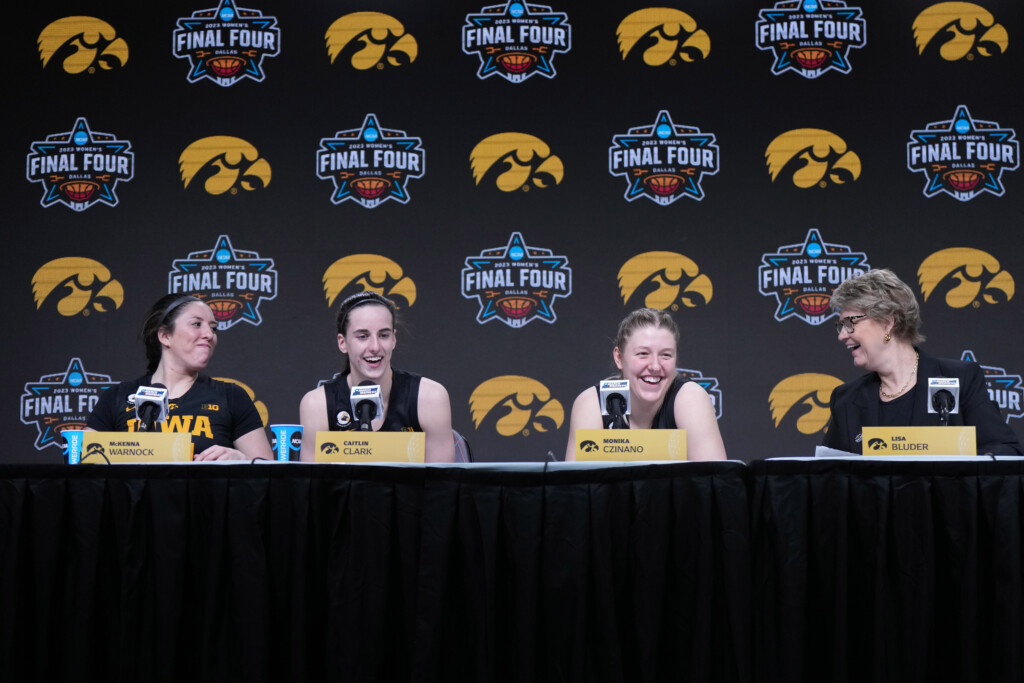
Kirby Lee-USA TODAY Sports
Women’s Final Four viewership has skyrocketed over the last few years, following a major increase in coverage from ESPN and other media.
But it still doesn’t come close to the men’s: The 2022 women’s national championship averaged 4.85 million viewers, while the men’s averaged 18.1 million.
The women’s game is years behind the men, so it needs more time to build an organic fan base. But networks could help that growth along.
ESPN has built a megacast of the event, from the main broadcast to the wildly popular “Bird and Taurasi Show” as a simulcast. The championship game will be on ABC. In total, the network uses 42 cameras, ESPN VP of Production Patricia Lowry told FOS.
But the tournament is still up against major properties on ESPN like “Sunday Night Baseball,” which bumps the championship to 3:30 p.m. ET rather than prime time. (The 2021 women’s championship drew more viewers than “Sunday Night Baseball” later that night.)
The network will air an hour-long pregame show on ABC — but the limited time for pre-and post-game storytelling remains an issue. Lowry noted that there weren’t enough minutes to run all of the packages that the network had produced.
Lowry believes the women’s Final Four could reach 18 million viewers. But “I think we’re a ways off from that, certainly.”
ESPN is interested in renewing its contract with the NCAA in 2024. The next deal could be worth more than twice the current package. If ESPN secures the tournament in the future, Lowry has big plans.
“I would love to see us doing a day of programming like a Super Bowl, where you’re seeing all of these different stories,” Lowry said. “The humanizing side of this is a good way to get people really invested. It gives you a reason to root for — sometimes against — someone.”
As for timing, “you can’t help what you’re scheduled against,” Lowry said. But she did note that semi-finals on ABC could be a possibility.
Above all, the biggest factor for increased viewership is the quality of the product itself. If the game is a thriller, the fan base will follow.
The growth of the women’s Final Four has no limits — other than the ones networks, media companies, and the NCAA create for it. The question is when those barriers will be removed.
